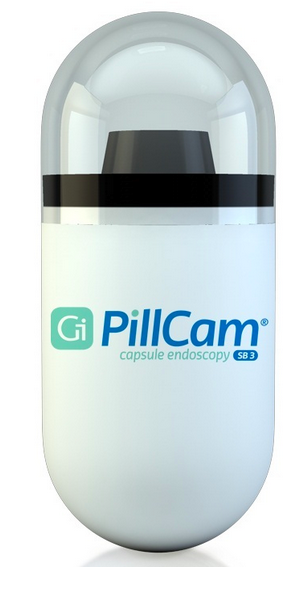 Covidien’s breakthrough capsulized wireless endoscope device PillCam SB, is among the featured exhibits in a presentation entitled: “Tools: Extending Our Reach,” that will be on display at New York’s Cooper Hewitt Smithsonian Design Museum for the next six months.
Covidien’s breakthrough capsulized wireless endoscope device PillCam SB, is among the featured exhibits in a presentation entitled: “Tools: Extending Our Reach,” that will be on display at New York’s Cooper Hewitt Smithsonian Design Museum for the next six months.
PillCam SB is included among the 175 exhibits on display to demonstrate how the conceptualization and fashioning of tools and innovations have progressively enhanced and extended the human body’s natural capacities and capabilities over two million years. The museum, which has been closed for three years for a major renovation project, just reopened on Dec. 12.
The Smithsonian Institution is widely acclaimed for its dedication to public education about key events and innovative advances throughout history, and PillCam SB’s elegantly innovative, patient-friendly design earned it a spot in the “Tools” presentation as one of only a few exhibits included that have been sourced from outside the Smithsonian’s own collection.
 The PillCam is a vitamin pill-sized, one-time-use capsule containing a tiny camera for the purpose of capturing color images of the sights and scenes during a journey through the patient’s gastrointestinal (GI) tract — illumination for which is provided by on-board LED lights while a wireless antenna sends the images to a receiver module the patient wears.
The PillCam is a vitamin pill-sized, one-time-use capsule containing a tiny camera for the purpose of capturing color images of the sights and scenes during a journey through the patient’s gastrointestinal (GI) tract — illumination for which is provided by on-board LED lights while a wireless antenna sends the images to a receiver module the patient wears.
Once they have ingested the capsule, patients can go about most normal daily activities while the capsule travels the length of their digestive system, during which it wirelessly transmits more than 50,000 small bowel image-views to the wearable receiver. Doctors can then scrutinize the resulting gallery of images, looking for any abnormalities.
“When PillCam SB launched in 2001, it allowed physicians, for the first time, to visualize abnormalities such as Crohn’s disease and small bowel bleeding lesions throughout all 23 feet of the small bowel,” says Covidien’s vice president and general manager of GI Solutions Vafa Jamali. “We are proud that today, more than two and a half million capsules have taken physicians through a part of the body that many people long considered to be un-viewable without extreme measures.”
Persons visiting the Cooper Hewitt Smithsonian Design Museum exhibit can learn more detail about the design and execution of PillCam SB’s miniaturized components and view interactive animation tables showing how the tiny camera platform measures the speed of its progress as it makes its way through the small bowel transmitting sharp clear videos of a part of the digestive tract inaccessible to conventional endoscopy for medical evaluation. The exhibit will run from December 12, 2014 to May 25, 2015.
“The Smithsonian Institution is acclaimed for its dedication to educating the public about history and innovative cultural advancements and we are honored to have PillCam SB included in this unique exhibit, says Mr. Jamali.
The Cooper Hewitt, Smithsonian Design Museum, founded in 1897, is America’s only museum exclusively devoted to design — both historic and contemporary. Through its education programs, exhibits and publications, the museum’s scope is international and it possesses one of the most diverse and comprehensive collections of design works on the planet. The more than 210,000 artifacts held by the Cooper Hewitt, Smithsonian Design Museum range from Egypt’s Late Period/New Kingdom (1100 B.C.) to present day.
Covidien has more than 39,000 employees, operates in more than 150 countries, and reported $10.7 billion revenues for 2014.
For more information, visit:
http://www.covidien.com
Sources:
Covidien
Cooper Hewitt, Smithsonian Design Museum
Image Credits:
Covidien

